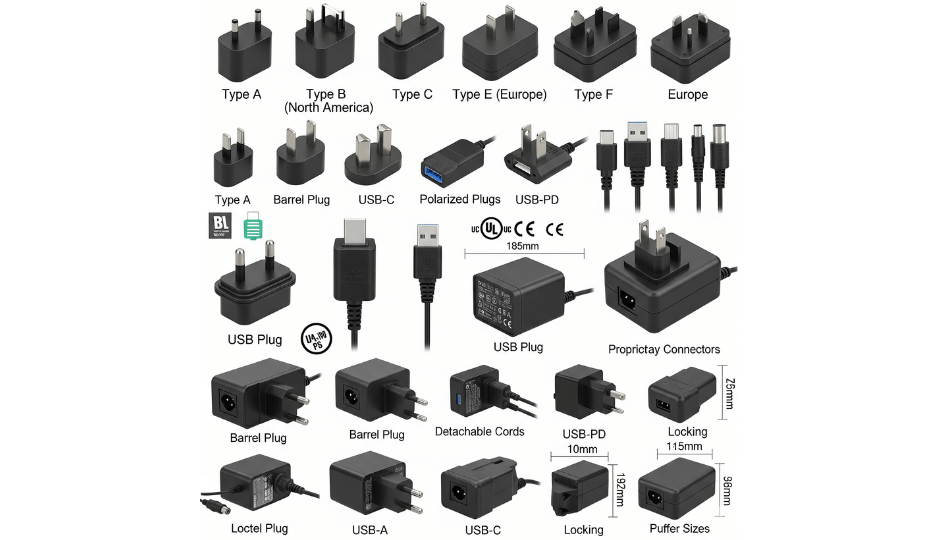Selecting the appropriate input and output plugs for a power adapter is crucial for ensuring compatibility with the device it will power and for safety. Here are some factors to consider when choosing the right plugs:
- Geographical Location: Different regions have different plug types due to varying electrical standards. For example, North America typically uses Type A and B plugs, while Europe often uses Type C, E, and F.
- Device Compatibility: Ensure that the output plug of the power adapter matches the input socket of the device. This is often a barrel plug, USB Type-A, or a proprietary connector.
- Current and Voltage Requirements: The power adapter should be able to handle the current and voltage requirements of the device. This is typically indicated on the device’s power supply or in its documentation.
- Safety Standards: Look for plugs that meet safety standards such as UL (Underwriters Laboratories), CE (Conformité Européene), or others relevant to your region.
- Polarized Plugs: For AC power, ensure that the plug is polarized if the device requires it. This means the plug has one blade wider than the other to ensure correct orientation in the socket.
- Detachable Cords: Some power adapters have detachable cords, which can be useful for travel or if you need to replace a damaged cord.
- USB-C and USB-PD: For modern devices that support USB-C and USB Power Delivery (USB-PD), a USB-C plug can provide fast charging and data transfer capabilities.
- Locking Mechanisms: Some power adapters have locking mechanisms on the output plugs to ensure a secure connection and prevent accidental disconnection.
- Physical Size: Consider the physical size and shape of the plug, especially if space is limited or if the adapter will be used in tight quarters.
- Certifications: Look for power adapters that have been certified by recognized organizations to ensure they meet safety and performance standards.
- Environmental Considerations: Some adapters are designed to be more energy-efficient, which can reduce energy consumption and environmental impact.
- Aesthetics: While not a functional consideration, the appearance of the plug and adapter can be a factor, especially if it will be visible in a professional or aesthetically important setting.

When in doubt, consult the device’s user manual or contact the manufacturer for guidance on the appropriate power adapter and plug type.




